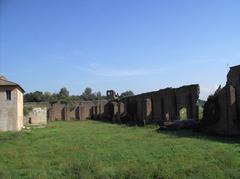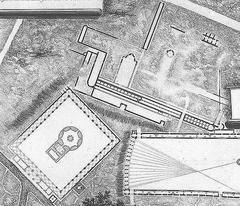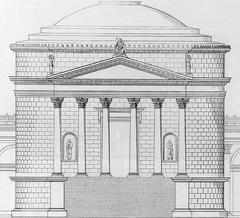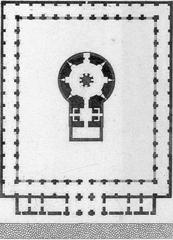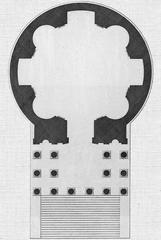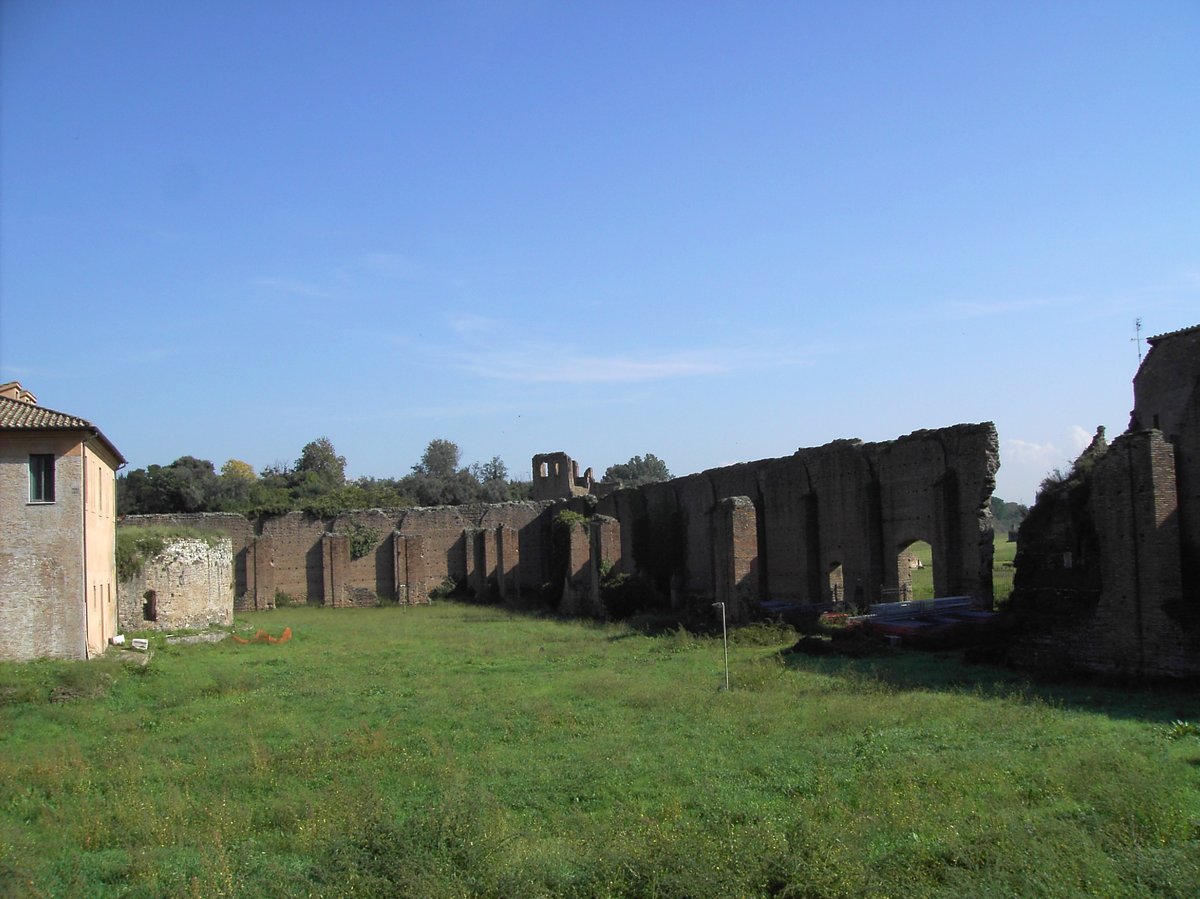
Mausoleum of Maxentius: Visiting Hours, Tickets, and Historical Guide
Date: 14/06/2025
Introduction
The Mausoleum of Maxentius stands as one of Rome’s most evocative ancient monuments, encapsulating the ambition and architectural innovation of the late Roman Empire. Situated along the historic Via Appia Antica, this monumental tomb was commissioned by Emperor Maxentius in the early 4th century CE, during a period of intense political rivalry. Intended primarily for his son, Valerius Romulus, the mausoleum is not only a symbol of personal grief but also a bold statement of dynastic continuity and imperial ideology.
Integrated within the wider Villa di Massenzio complex, which features the well-preserved Circus of Maxentius and the remains of an imperial villa, the mausoleum reflects the strategic use of architecture to project power, legitimacy, and connection to Rome’s illustrious past. Today, it offers visitors a fascinating window into late antique funerary practices, imperial propaganda, and the enduring legacy of one of Rome’s last pagan emperors.
This comprehensive guide covers the mausoleum’s history, architecture, visitor information, accessibility, and nearby attractions. For the latest updates, consult the Villa di Massenzio official website and the Parco Archeologico dell’Appia Antica.
Table of Contents
- Historical Context and Dynastic Ambitions
- Architectural Design and Symbolism
- The Imperial Complex: Layout and Features
- Preservation, Restoration, and Archaeological Research
- Visiting the Mausoleum of Maxentius
- Nearby Attractions and Suggested Itineraries
- FAQs
- References and Further Reading
Historical Context and Dynastic Ambitions
Commissioned between 306 and 312 CE, the Mausoleum of Maxentius arose during a time of civil war and political upheaval in Rome. As the son of Emperor Maximian, Maxentius positioned himself against the prevailing Tetrarchic system, aiming to restore traditional Roman values and assert his legitimacy (Zimmermann & Hofmann, 2016). The mausoleum was dedicated to his son, Valerius Romulus, who died in 309 CE. This personal loss became a tool for imperial propaganda, as the dynastic tomb reinforced Maxentius’s claims to power and his connection to Rome’s origins (Madain Project; Italy Magazine).
By constructing a monumental complex along the Appian Way—a route reserved for Rome’s elite burials—Maxentius visually and symbolically tied his dynasty to the city’s storied past. The name “Romulus” itself, evoking Rome’s legendary founder, added further weight to the mausoleum’s ideological purpose.
Architectural Design and Symbolism
The Domed Rotunda
The mausoleum’s design follows the tradition of grand imperial tombs such as those of Augustus and Hadrian, with a circular domed rotunda at its core. The surviving lower level (crypt) consists of a massive octagonal pillar and a vaulted ambulatory with niches for sarcophagi, while the now-lost upper chamber was likely crowned with a monumental dome (Cambridge University Press; New in Rome Tours). The structure’s monumental scale and harmonious proportions were intended to evoke both celestial symbolism and imperial grandeur.
Construction Techniques
Built using opus vittatum—alternating layers of tuff blocks and bricks—the mausoleum demonstrates the technical prowess of late Roman architecture. Terracotta amphorae embedded in the foundations reduced weight and enhanced stability, a technique visible in other major Roman structures (New in Rome Tours).
Symbolic Placement
The mausoleum’s integration with the nearby circus and palace was a deliberate spatial narrative, linking family memory, imperial power, and public spectacle. Its prominent location on the Appian Way ensured it was both a private sanctuary and a public statement of dynastic ambition (Turismo Roma).
The Imperial Complex: Layout and Features
The Villa di Massenzio complex includes:
- Imperial Palace: Remnants of a grand residence showcasing imperial luxury.
- Circus of Maxentius: The best-preserved Roman circus in Rome, over 500 meters long, used for chariot races, possibly for Romulus’s funerary games (Artsupp; History Tools).
- Mausoleum of Romulus: The central dynastic tomb, originally enclosed within a sacred precinct.
The complex’s orientation and monumental scale were intended to rival earlier imperial projects, reinforcing Maxentius’s role as Rome’s protector and restorer (Academia.edu).
Preservation, Restoration, and Archaeological Research
Although the complex fell into disuse after Maxentius’s defeat at the Battle of the Milvian Bridge (312 CE), its rural location spared it from extensive quarrying. Medieval repurposing and centuries of neglect were followed by renewed interest from Renaissance antiquarians and modern archaeologists (Cambridge University Press). A major restoration project, completed in the early 2020s with €873,000 in funding, stabilized the mausoleum and improved visitor access (Italy Magazine). Digital surveys and virtual reconstructions have further illuminated its original appearance and significance (ResearchGate).
Visiting the Mausoleum of Maxentius
Hours and Tickets
- Location: Via Appia Antica 153, Rome, Italy
- Opening Hours: Tuesday to Sunday, 10:00–16:00 (last entry at 15:00). Closed Mondays and select holidays; hours may shift seasonally. Always consult the official Villa di Massenzio website for updates.
- Tickets: Entry is free of charge as part of the Parco Archeologico dell’Appia Antica (New in Rome Tours).
- Booking: No advanced ticketing is required for general entry, but check the website for special events or guided tour schedules.
Accessibility
- The crypt and surrounding park feature uneven terrain and ancient steps, limiting wheelchair accessibility. Wear sturdy footwear and bring water, particularly in warmer months.
- Public transport: The 118 bus connects the site to central Rome (Colosseum, Circus Maximus).
- Facilities are limited, with restrooms at the park entrance; plan accordingly (Turismo Roma).
Guided Tours and Visitor Tips
- Guided Tours: Offered occasionally by the park and private operators; inquire ahead for English-speaking guides.
- Virtual Experiences: Online resources, virtual tours, and interactive maps enhance understanding (ResearchGate).
- Best Time to Visit: Early morning or late afternoon avoids crowds and offers the best light for photography.
Tips
- Combine your visit with a walk or bike ride along the scenic Appian Way.
- Bring a picnic to enjoy the tranquil park setting.
- As 2025 is a Jubilee Year, expect increased visitors citywide—plan transport and accommodations in advance.
Nearby Attractions and Suggested Itineraries
Appian Way Highlights:
- Circus of Maxentius: Adjacent, with original starting gates and an intact spina.
- Mausoleum of Caecilia Metella: Iconic tomb and medieval fortress, a short walk south.
- Catacombs of San Sebastiano & San Callisto: Early Christian burial sites nearby, with guided tours.
- Capo di Bove: Remains of a Roman villa with mosaics and baths.
- Basilica di San Sebastiano: Blending ancient and Baroque elements above the catacombs.
Suggested Half-Day Route:
- Start at Catacombs of San Callisto.
- Proceed to San Sebastiano and its basilica.
- Visit the Villa di Massenzio (mausoleum and circus).
- Continue to Caecilia Metella and Capo di Bove.
FAQs
Q: What are the Mausoleum of Maxentius visiting hours?
A: Tuesday–Sunday, 10:00–16:00; check the official website for seasonal variations.
Q: Is there an entrance fee?
A: No, entry is free.
Q: Are guided tours available?
A: Yes, occasionally by park staff or private operators. Inquire ahead for schedules.
Q: Is the site wheelchair accessible?
A: Accessibility is limited due to ancient terrain.
Q: How do I get there from central Rome?
A: Take the 118 bus from the Colosseum or Circus Maximus.
Q: Is photography allowed?
A: Yes, for personal use.
References and Further Reading
- The Political Power of the Palace: The Residences of Maxentius in Rome, 2016, Zimmermann & Hofmann
- Imperial Complex of Emperor Maxentius, Madain Project
- Mausoleo di Romolo, Lonely Planet
- Villa di Massenzio, Turismo Roma
- Villa of Maxentius on the Appian Way, New in Rome Tours
- Mausoleum Romulus – Rome’s Circus Maxentius Reopens, Italy Magazine
- Channeling the Past and Structuring the Future: The Versatile Architectural Vocabulary of Maxentius’ Villa on the Via Appia, Academia.edu
- The Junction of Immersive Analytics and Virtual Reconstructions – A Case Study on the Mausoleum of Emperor Maxentius, ResearchGate
- The Circus of Maxentius: A Window into Ancient Roman Spectacle and Splendor, History Tools
- Villa di Massenzio Official Website
- Parco Archeologico dell’Appia Antica
Final Thoughts
The Mausoleum of Maxentius offers an immersive journey through late Roman history, imperial ambition, and architectural mastery. Its tranquil setting, monumental remains, and proximity to other Appian Way treasures make it an essential stop for anyone seeking to explore Rome beyond the usual tourist circuit. Plan your visit, take advantage of free entry and guided tours, and experience firsthand the legacy of a fascinating moment in Rome’s imperial past.
